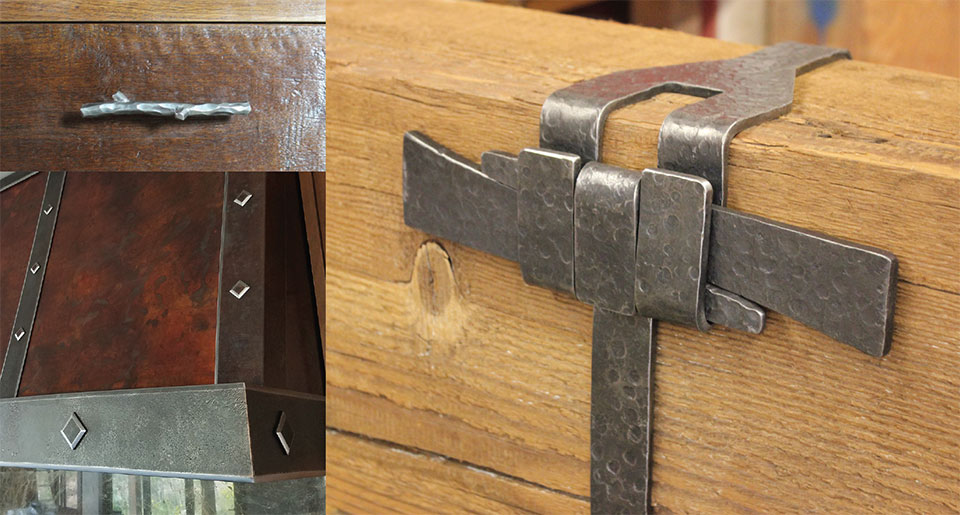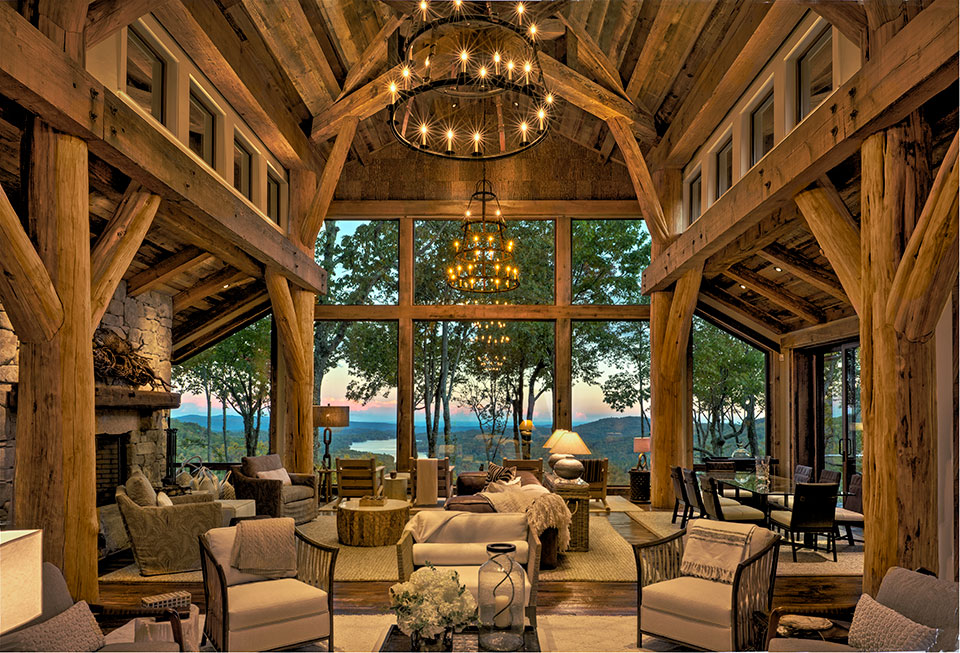Big Timberworks: Transforming Materials Into Unique Living Spaces
By Walt Burns
“We are an employee-owned workers co-op and we have 13 owners and about a couple dozen employees. We’re a group of artisans who have a passion for what we do.”
–Hudson Hart, Big Timberworks
Often lost in the discussion about architecture is the role of people. When we look at structures, even homes, it’s easy to focus on the design and materials—wood, steel, stone, and glass. Hard, inanimate objects. But it’s human hands that turn these materials into the structures we live in.
At first glance, Big Timberworks in Gallatin Gateway, Montana, might seem like nothing more than a collection of timber and metal. But talk to Hudson Hart and you get a deeper story. “We are an employee-owned workers co-op and we have 13 owners and about a couple dozen employees spread over full-time and part-time,” he says. But it goes even deeper, and as Hart adds, ”We’re a group of artisans who have a passion for what we do. Whether it’s wood or metal, we really enjoy our work.”
When you see what this collection of artisans produces from its timber frame shop, fine woodworking shop, metalworks shop, and sawmill, that passion is evident.
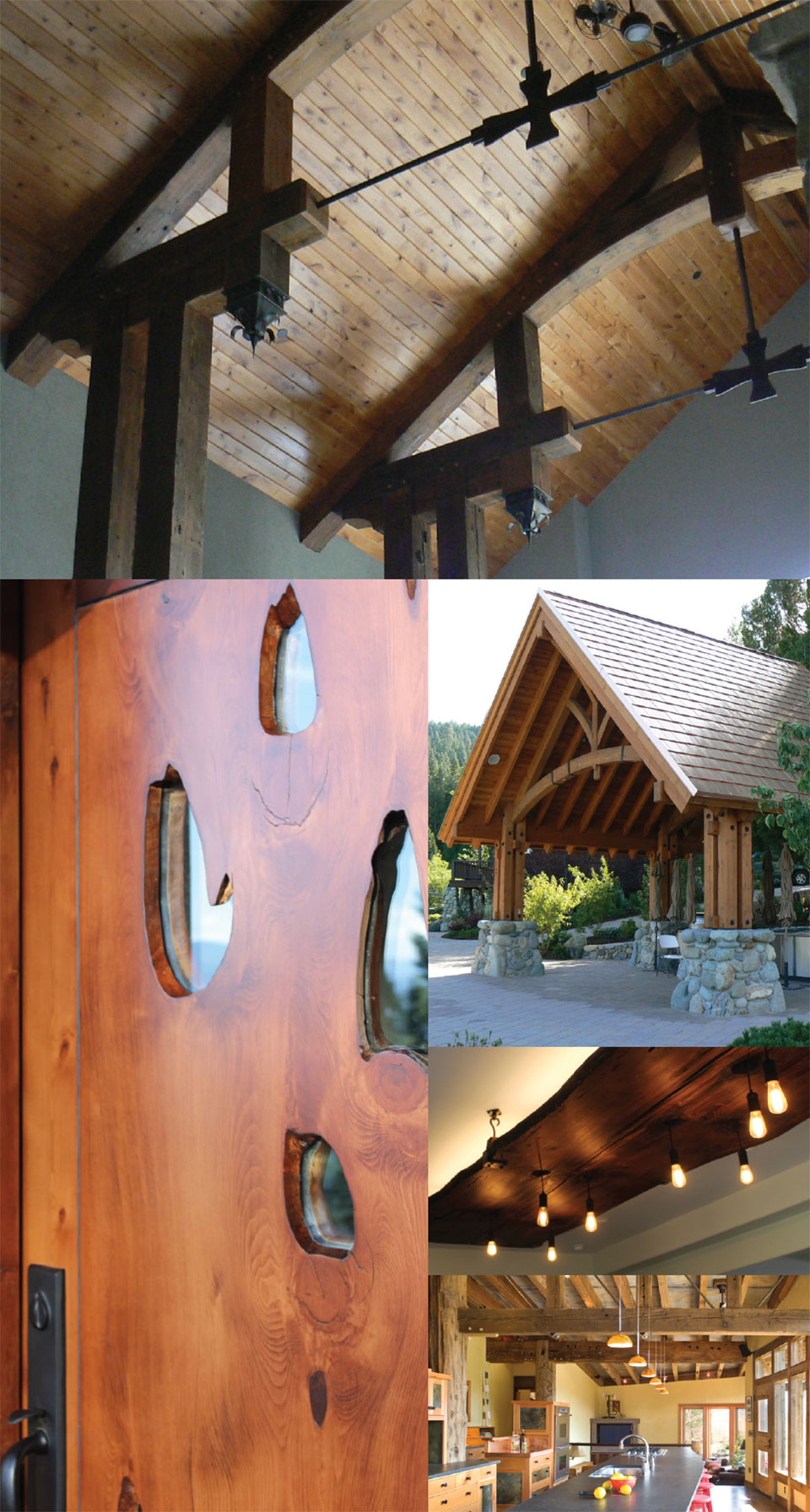
Framing with Reclaimed Timber
There are a lot of things that led Big Timberworks to championing reclaimed timber. There are sustainability advantages, to be sure, but additionally, from an architectural standpoint, there are few better ways to create a unique space.
“There are so many different kinds of woods out there but we try and only use commercially salvaged Douglas fir. Those are timbers that have come out of old warehouse structures or old army buildings or even old shipyards. Back in the ‘30s, ‘40s, and ‘50s, all the steel was going into the war effort and so if someone was going to build a big warehouse in Chicago they would put a bunch of Doug fir trees on a train and they’d build the structure out of timber. It’s super high-quality material. That old timber is mostly cut from the old-growth forest so it tends to have really dense growth rings. And initially it was extremely cheap. In fact, you could get the wood for free at demolition sites,” Hudson explains. Unfortunately, those days are over.
Another unique attribute of reclaimed wood is that it often comes with a story. “We’ve gotten timbers from the Trojan factory in New Jersey before. There are some interesting stories behind a lot of this wood,” adds Hart.
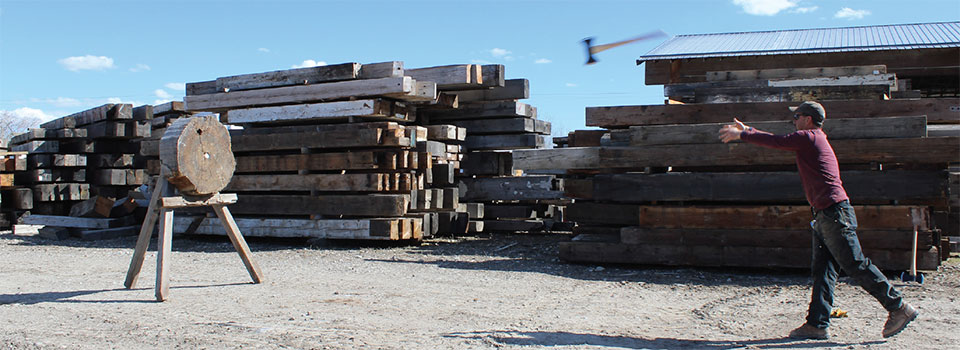
The firm’s affinity for this material leads Big Timberworks to take on all manner of projects. “We do a lot of small projects as well as large-scale projects. Like a single truss. Or an accent piece in an entryway. Those types of things are nice because they keep us busy between the big projects,” Hart shares.
As we’ve seen a shift in architecture styles in the Mountain West, Big Timberworks has continued to evolve with their salvaged wood offerings. Hart explains, “The roof lines of a lot of these buildings have changed from more traditional roof pitches to single pitch and shallow pitches. A lot of walls are glass. In some cases, it’s dramatically different architecture and doesn’t lend itself to big heavy trusses, but it does generate the need for a lot of beams. Something we’ve been doing a lot of lately are box beams. These are a great way to provide unique character while concealing various construction elements—steel beams, laminated beams, and wiring, for example.”
Fine Woodworking Shop
If you find yourself in the vicinity of Gallatin Gateway and arrange to stop by Big Timberworks, you will undoubtedly want to devote a significant chunk of time to peruse the inventory in their live edge warehouse. “Primarily, we build live edge dining room and conference room tables. We inventory roughly 300 pieces of live edge wood that range from 12” wide to 60” wide and from a few feet long to 18 feet long. We have cedar, fir, walnut, honey locust, elm, oak, sycamore…lots of different species that make excellent tables,” says Hart.
Every piece that comes out of this shop is stunning—not to mention utterly unique.
Hart expands on this, saying, “We build the bases. Sometimes out of wood, sometimes out of metal, sometimes a combination. We occasionally use stone for ballast. We’ve built some with metal coming up out of the stone—those are pretty cool.”
Again, attaining not only this level of craft but artistic interpretation as well, uncovers stories about the builders that are as unique as the pieces themselves. “The guy who does all of our tables came up through the ranks as a boat builder. It’s a very exacting type of woodworking. He has also become an expert at the finish work,” Hudson adds. “You can build something really nice and put a bad finish on it and end up with a piece of junk.”
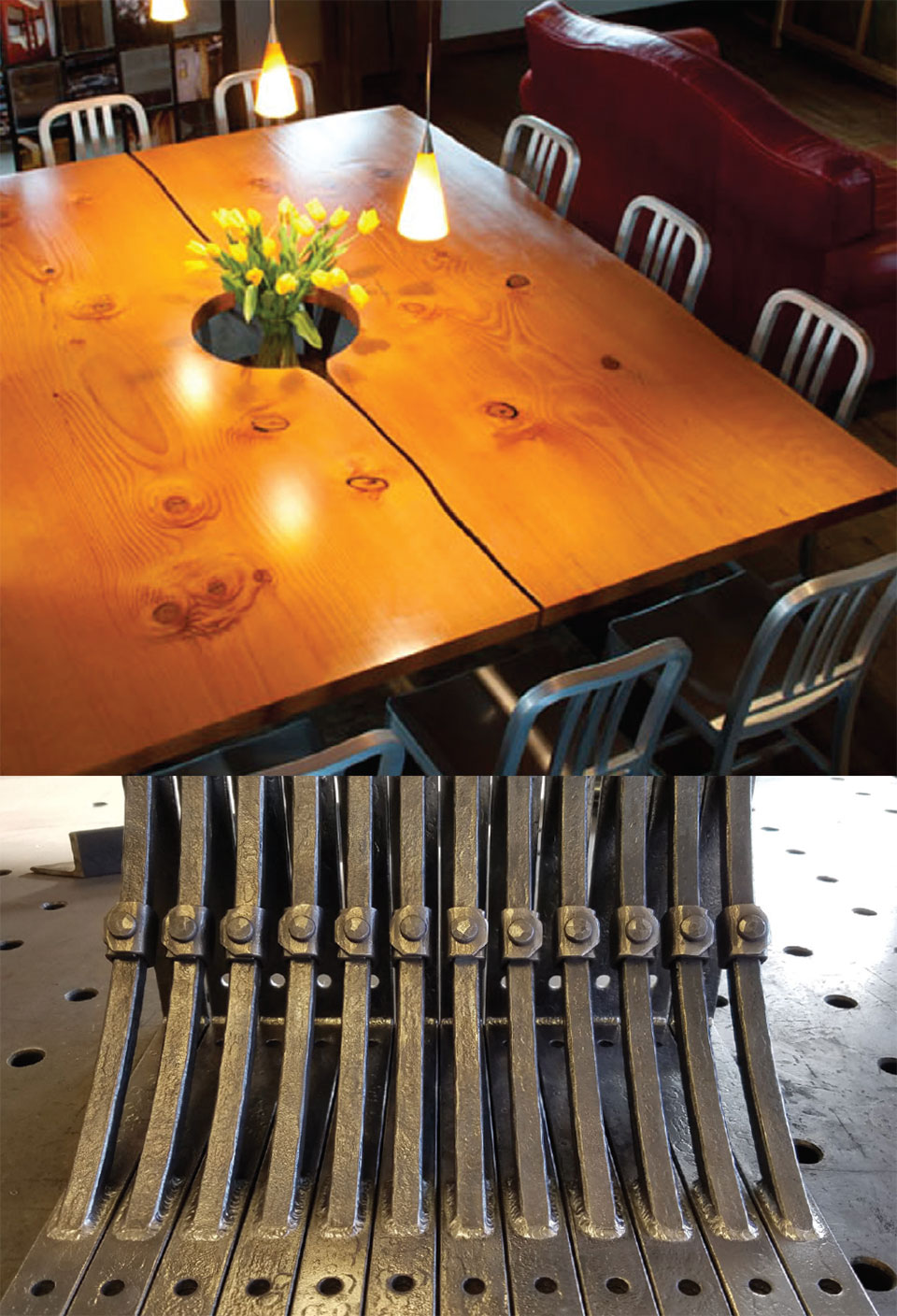
“We make some extremely cool connectors for our timber pieces. That’s how our metal shop was born.”
–Hudson Hart, Big Timberworks
Metal works
Big Timberworks has a full-service metal shop that focuses on architectural metal work—railings, mono-stringer staircase systems, fireplace fronts, kitchen hoods—as well as pieces for the timber shop.
“We make some extremely cool connectors for our timber pieces. That’s how our metal shop was born. We do custom forge work, patina work on the metal, and build some beautiful and unique ways to connect our timber pieces,” says Hart.
About keeping with their artistic inclination, he continues, “We use a lot of found objects. We recently did light housing on top of stone columns at the end of a client’s driveway that was very interesting. We built steel lamp shades out of old plow discs and old gravel yard screen. We use a lot of gravel screen. There are lots of different weaves so we use it in a lot of different applications.”
Between metal, salvaged Douglas fir, and stunning live edge wood, it would be easy to think that Big Timberworks is simply a story of unique materials. But Hart again points to the people that make up the company. “The average longevity of our employees is more than 15 years. We have a great bunch of people who enjoy what we do and enjoy working together,” he says with a smile.
